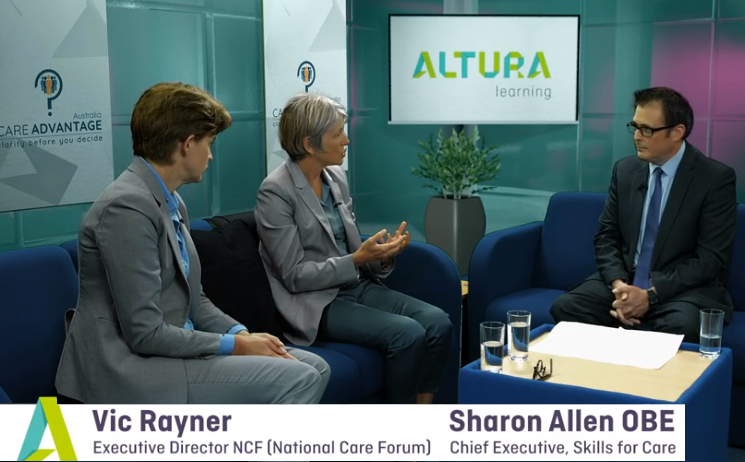The Care Workforce – A UK Sector View with lessons for Australia
22 Oct 2018Sharon Allen is the CEO of Skills for Care who are a delivery partner for the Department of Health and Social Care. They help create a well-led, skilled and valued adult social care workforce. Vic Rayner is Executive Director of the National Care Forum, an industry Peak Body supporting members in the Not for Profit sector. Significant and close interactions with a large number of providers gives these commentators a close-up view of the ingredients needed to deal with looming workforce challenges.
No Silver Bullet
Whilst good initiatives appear on a regular basis, dealing with the existing and emerging Workforce challenges requires a big picture response.
- End to end solutions.
- Recruit Develop & Retain: What are you doing differently, have your results changed?
- Evidence – understand and acknowledge what actual results are telling you.
- Values based screening delivering significant improved performance.
- Clients and Colleagues (staff) Consistent person centred treatment for both.
- Community of people and support – not just a workforce.
- Co-production to involve clients in decisions.
- Fight the urge to be reactive – determine where you need to be in the future.
- Invest in the cure, don’t treat the symptoms.
- Workforce Strategies that align with Operational and Commercial realities.
Industry perception is changing – for the worse
After 5+ years in a Person-Centered environment, where the legislation and regulation reinforce the need to put the client at the centre of decisions, Sharon believes the sector is losing ground in its fight for community recognition. Key messages: don’t wait for a sector/or government response.
- Self help:
- Community engagement & education IS part of your workforce strategy
- Address the perception and value of your services in the community
- ICare Ambassador Program to attract staff
The Local Manager
The local manager is a critical part of quality and performance. Find those who value staff, invest in people from induction onward and find ways to connect with staff.
Technology
Technology is used to enhance person-centred and relationship-based care, not to replace staff. Technology provides the transparency to identify areas for improvement based on evidence. It is a critical component of successful care provision now and in the future.






